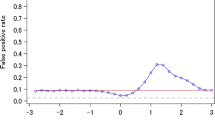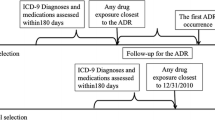Abstract
Objective: The database of adverse drug reactions (ADRs) held by the Uppsala Monitoring Centre on behalf of the 47 countries of the World Health Organization (WHO) Collaborating Programme for International Drug Monitoring contains nearly two million reports. It is the largest database of this sort in the world, and about 35 000 new reports are added quarterly. The task of trying to find new drug–ADR signals has been carried out by an expert panel, but with such a large volume of material the task is daunting. We have developed a flexible, automated procedure to find new signals with known probability difference from the background data. Method: Data mining, using various computational approaches, has been applied in a variety of disciplines. A Bayesian confidence propagation neural network (BCPNN) has been developed which can manage large data sets, is robust in handling incomplete data, and may be used with complex variables. Using information theory, such a tool is ideal for finding drug–ADR combinations with other variables, which are highly associated compared to the generality of the stored data, or a section of the stored data. The method is transparent for easy checking and flexible for different kinds of search.
Results: Using the BCPNN, some time scan examples are given which show the power of the technique to find signals early (captopril–coughing) and to avoid false positives where a common drug and ADRs occur in the database (digoxin–acne; digoxin–rash). A routine application of the BCPNN to a quarterly update is also tested, showing that 1004 suspected drug–ADR combinations reached the 97.5% confidence level of difference from the generality. Of these, 307 were potentially serious ADRs, and of these 53 related to new drugs. Twelve of the latter were not recorded in the CD editions of The physician's Desk Reference or Martindale's Extra Pharmacopoea and did not appear in Reactions Weekly online.
Conclusion: The results indicate that the BCPNN can be used in the detection of significant signals from the data set of the WHO Programme on International Drug Monitoring. The BCPNN will be an extremely useful adjunct to the expert assessment of very large numbers of spontaneously reported ADRs.
Similar content being viewed by others
Author information
Authors and Affiliations
Additional information
Received: 13 October 1997 / Accepted in revised form: 5 February 1998
Rights and permissions
About this article
Cite this article
Bate, A., Lindquist, M., Edwards, I. et al. A Bayesian neural network method for adverse drug reaction signal generation. E J Clin Pharmacol 54, 315–321 (1998). https://doi.org/10.1007/s002280050466
Issue Date:
DOI: https://doi.org/10.1007/s002280050466




